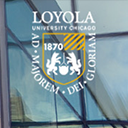The Current State of Recognition Ceremonies for Entry-Level Nursing Students
Purpose
This study was designed to describe the current use of recognition programs in all types of entry-level registered nursing programs and determine the relationship between pinning ceremonies and demographic variables.
Background and significance
Historically, ceremonies and symbols, including nursing pins, have been used to create a professional identify and recognize nursing graduates. Little has been written about these celebrations.
Theoretical/Conceptual framework
According to Maslow, all people share a strong need to belong. The framework that guided this research was rooted in belongingness and connectedness, both as nursing students and as professional nurses. These dimensions affect achievement, aspirations, and retention.
Method
A list of deans and directors for accredited U.S. RN nursing programs was derived from the Commission on Collegiate Nursing Education (CCNE), Accreditation Commission for Education in Nursing (ACEN), and National League for Nursing Commission for Nursing Education Accreditation (NLN CNEA). Unaccredited RN programs were excluded from this study. A total of 1,882 nursing program dean and directors received a researcher-constructed survey that included demographic, forced choice, and open-ended questions. Each dean or director received an email explaining the research study with a link to the survey and two reminders were sent.
Results
The response rate was 29% (n=547). Participants represented all US geographic regions, all levels of entry into practice, and all three types of accreditation. The majority of programs (89.3%) reported holding a pinning ceremony for graduating senior nursing students. Statistically significant differences were found for three variables: type of entry level nursing program, type of program accreditation, and the era in which the program was established. Pinning ceremonies included multiple components and were often combined with other events. Nursing programs reported hosting recognition events prior to the first clinical course and for program milestones.
Conclusions
Most programs hold a pinning ceremony. The research provides baseline information about both traditional and unique ceremonies to celebrate nursing students at graduation and at milestones throughout the curriculum. The information may be helpful for programs seeking to re-engage students in a meaningful manner post-COVID. Research on the impact of these ceremonies on students is needed.
The Current State of Recognition Ceremonies for Entry-Level Nursing Students


